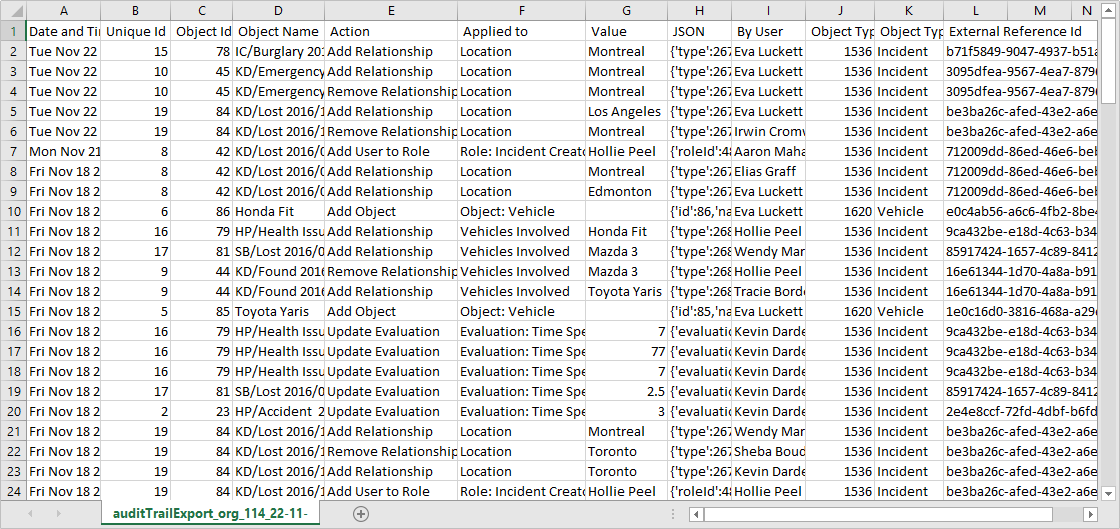Exporting historical Data changes prior to the 3.6 release can still be exported by following these steps.
To export an audit trail of changes made before version 3.6, see the Data Audit Archive Export article. For more information on the audit trail that tracks user-related events and changes, see the User Audit Trail section.
To export an archived Data Audit Trail spreadsheet:
- Click the top bar
 icon in the Tools > Data Audit Archive Export section.
icon in the Tools > Data Audit Archive Export section. - Select a start date and end date using the From and To fields to define your time range.
 The Data Management Audit Trail page.
The Data Management Audit Trail page. - Optional: Select the maximum number of records you want returned in the spreadsheet from the Limit dropdown menu. Note: Leaving this field's default value of --max records-- will return up to one million records.
- Click Export Audit Trail to generate the spreadsheet. Once successful, your browser automatically begins the file download.
 Generating an audit trail spreadsheet.
Generating an audit trail spreadsheet. - Click the bottom of your browser window to open the downloaded file.
 icon in the Tools > Data Audit Archive Export section.
icon in the Tools > Data Audit Archive Export section.

